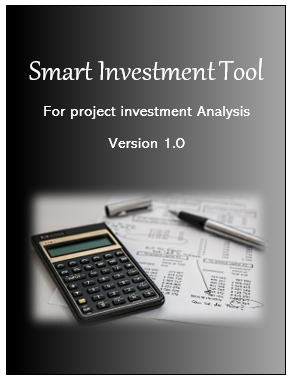Capital Investment Analysis
Guides, Tools, and Calculators
Applied Economics in U.S. Manufacturing

Capital Investments
The methods discussed here can be used to examine many types of investments; however, in this case, there is a focus on capital investments. A capital investment is a venture that aims to further a business’ objectives as opposed to a financial investment which focuses on financial instruments. Capital investments made by manufacturers might include:
- Research and development expenditures
- Employee training and education
- Construction of facilities and structures
- Procurement of machinery and equipment
Methods for Investment Analysis
Investment analysis is the economic evaluation of investing in a project, asset, or other venture. Typically, it includes weighing costs, benefits, and risks, some of which may not be financial in nature (e.g., environmental impact or health and safety). Investment analysis can identify whether an investment is economical, or it can rank a selection of investments. For instance, a manufacturer might have 5 potential investments, but can only afford three of them. Investment analysis can identify which three to select. Common methods for capital investment analysis are presented in NIST 200-5 (discussed below) and include:
- Discounting (section 2.1): the process of adjusting future values to present value terms
- Present value (section 2.3): the adjusted value of future cash flows
- Net present value (section 2.4): the difference between the present value of all cash inflows and the present value of all cash outflows over the period of the investment.
- Internal rate of return (section 2.5): a rate of return calculated as the discount rate at which the net present value is zero
- Payback period (section 3.3): the time required to recoup an investment
- Real options and decision trees (section 3.4): incorporates future decisions into an investment analysis
- Sensitivity analysis using Monte Carlo techniques (section 3.1): a probabilistic sensitivity analysis that randomly samples from probabilities for a selection of input variables
- Environmentally sustainable investment analysis: an investment analysis that incorporates environmental impacts
These approaches are particularly relevant to investments that further the goals and objectives of manufacturing firms; however, they are applicable in a wide range of investment types and industries.
Guides, Tools, and Calculators for Capital Investment Analysis
Below are guides and tools that focus on investment analysis. The first item listed, the Guide to Investment Analysis, discusses investment analysis primarily from the perspective of a proprietor. Thus, it focuses on businesses making investments in their business.
The second item, the Smart Investment Tool, is an Excel tool that implements the methods presented in the previously mentioned Guide to Investment Analysis it includes a net present value calculator, internal rate of return calculator, and Monte Carlo simulation for sensitivity analysis.
The third item, the Guide for Environmentally Sustainable Investment Analysis, is also from the perspective of a proprietor. The method presented here, however, incorporates a technique for weighing the tradeoffs between financial returns and environmental impacts.
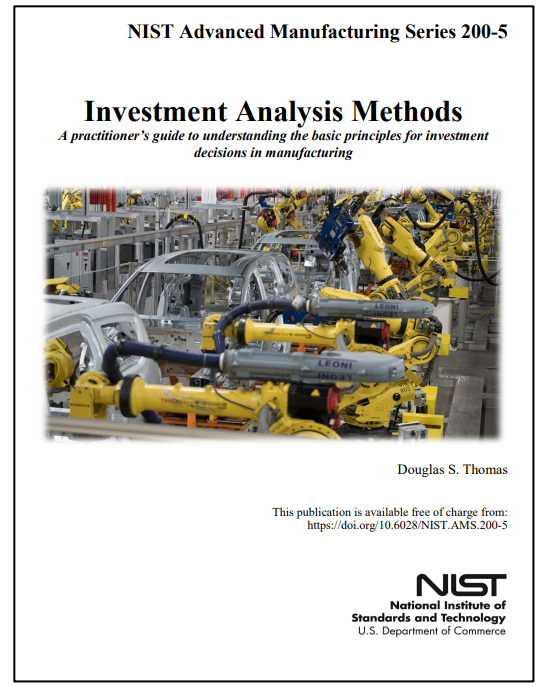
Guide to Investment Analysis
This guide was assembled to aid manufacturers in evaluating potential investments. It is an overview of the primary methods used for evaluating investments in manufacturing technologies and was designed to minimize the amount of time and resources needed to understand them. It aids in answering questions such as:
- We have five proposed investments but can only afford a selection of them. Which investments do we choose?
- Is it more cost effective to invest in new machine tools or a new HVAC control system?
- What HVAC control system is the most cost effective?
- Is a new robotic system cost effective?
Smart Investment Tool
This Excel tool implements the methods discussed in the guide above (i.e., NIST Advanced Manufacturing Series 200-5), including the following:
- Discounting: the process of adjusting future values to present value terms
- Present value: the adjusted value of future cash flows
- Net present value calculator: the difference between the present value of all cash inflows and the present value of all cash outflows over the period of the investment.
- Internal rate of return calculator: a rate of return calculated as the discount rate at which the net present value is zero
- Payback period calculator: the time required to recoup an investment
- Sensitivity analysis using Monte Carlo techniques: a probabilistic sensitivity analysis that randomly samples from probabilities for a selection of input variables
SITExpress
This online tool implements the methods discussed in the guide above (i.e., NIST Advanced Manufacturing Series 200-5), including the following:
- Discounting: the process of adjusting future values to present value terms
- Present value: the adjusted value of future cash flows
- Net present value calculator: the difference between the present value of all cash inflows and the present value of all cash outflows over the period of the investment.
- Internal rate of return calculator: a rate of return calculated as the discount rate at which the net present value is zero
- Payback period calculator: the time required to recoup an investment
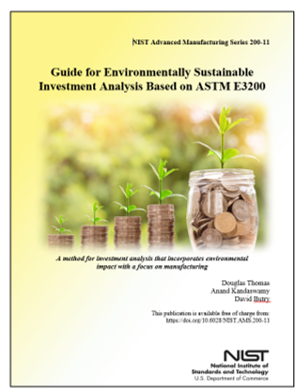
Guide for Environmentally Sustainable Investment Analysis Based on ASTM E3200
This guide covers techniques for evaluating manufacturing investments from the perspective of environmentally sustainable manufacturing by pairing economic methods of investment analysis with environmental aspect of manufacturing, including manufacturing processes. It is based on “ASTM E3200: Guide for Environmentally Sustainable Investment Analysis.” It aids in answering questions such as:
- We have five proposed investments but can only afford a selection of them. Which investments should we choose when considering cost effectiveness and environmental sustainability?
- Is a proposed investment both cost effective and environmentally sustainable?
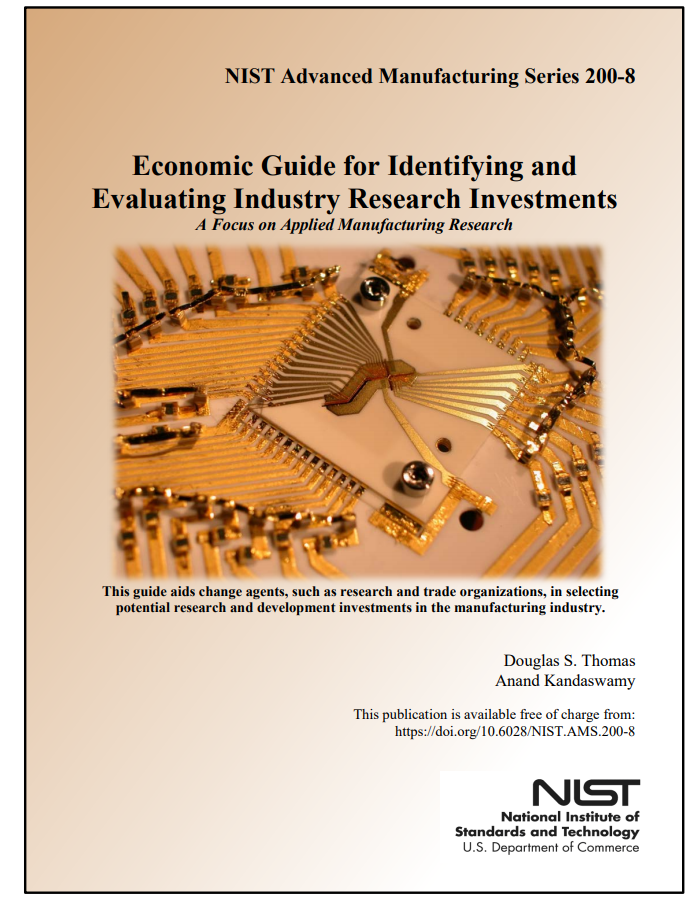
Guide for Identifying and Evaluating Industry Research Investments
This guide was assembled to aid change agents, such as research and trade organizations, in evaluating potential research and development investments in the manufacturing industry. It uses a 5-step process starting with identifying potential projects and working through project selection. It answers questions such as:
- How can our research organization identify high impact projects?
- Our research organization has 10 potential projects, but can only afford to invest in a selection of them, which ones do we chose?
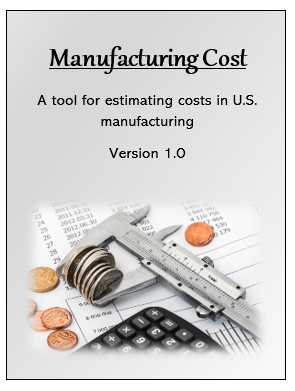
MCG for Supply Chain Statistics
The Manufacturing Cost Guide (MCG) is a tool that estimates industry statistics for the manufacturing supply chain based on economic input-output analysis. It allows users to estimate value added for an industry and its supply chain. For example, a user could estimate the supply chain components of the automobile manufacturing, which would estimate the value added from all the other industries that is used by the automobile manufacturing industry. The tool also estimates the types of labor that are used, compensation, environmental impact, energy use, and assets in the supply chain.
Contacts
-
(301) 975-4918


